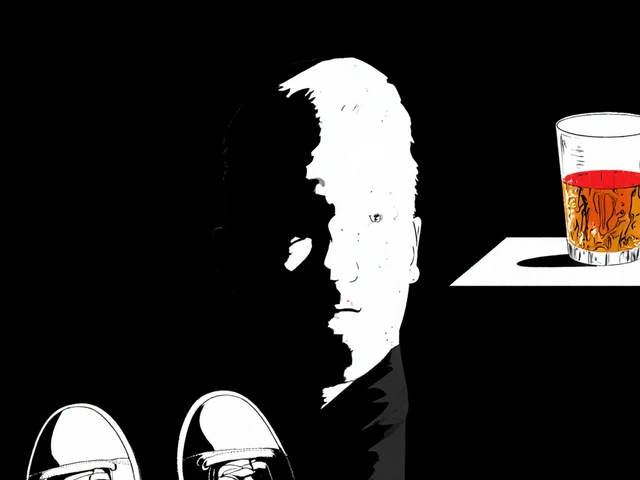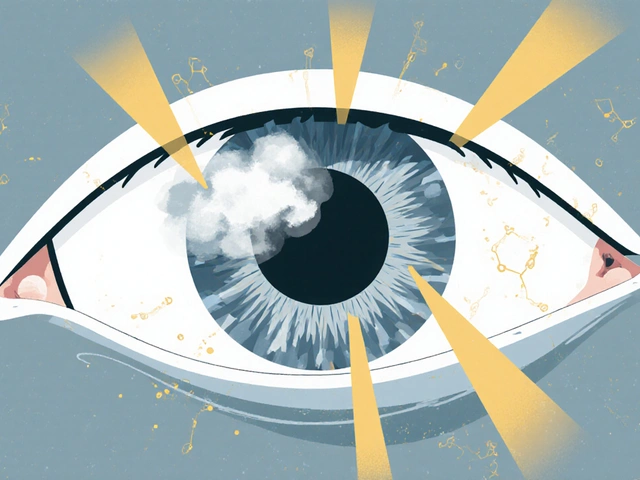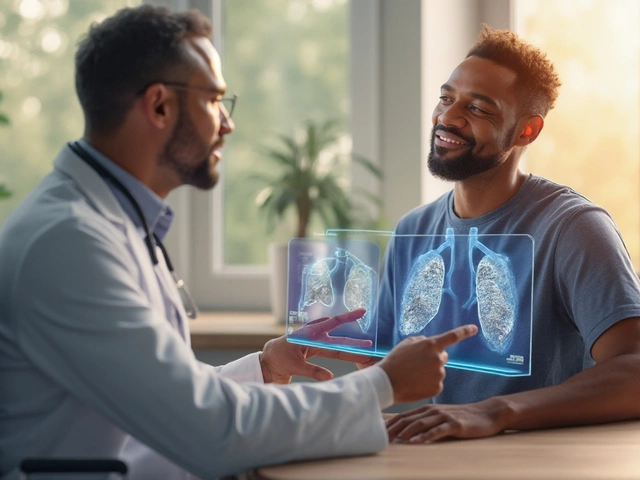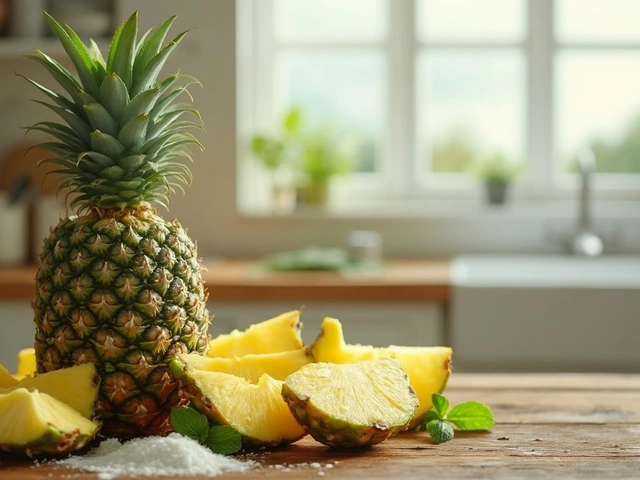If your child swallows the wrong medication, time is everything. Every second counts. You won’t have time to Google answers or wait to see if they seem fine. The right actions in the first five minutes can mean the difference between a quick visit to the ER and a life-changing emergency. This isn’t about panic-it’s about knowing exactly what to do before you even think about calling 911.
Step 1: Call Poison Control Immediately
Don’t wait. Don’t try to figure it out yourself. Don’t wait to see if your child looks sick. The first thing you do is call Poison Control. In Australia, that’s 13 11 26. In the U.S., it’s 800-222-1222. This number is faster than 911 in these cases because poison specialists are trained to give you real-time instructions based on what was swallowed, how much, and how old your child is. Poison Control doesn’t just tell you to go to the hospital. They might tell you to watch your child at home, give you steps to monitor breathing or alertness, or confirm you need to rush to the ER. In 2022, Poison Control centers in the U.S. handled nearly 2 million calls involving children under five. Of those, 43% fewer kids ended up hospitalized because families followed their advice.Step 2: Remove Any Remaining Medication from Their Mouth
While you’re on the phone with Poison Control, quickly check your child’s mouth. If there’s a pill, tablet, or liquid still there, gently remove it with your fingers. Don’t force it. Don’t stick your fingers deep down their throat. Just take out what’s visible. If it’s a patch-like a fentanyl or nicotine patch-check their skin, gums, and even the roof of their mouth. Patches stick. Kids suck on them. They can stay stuck for hours if you don’t find them.Step 3: Do NOT Induce Vomiting
This is the biggest mistake parents make. You might have heard old advice like “make them throw up.” That’s wrong. And it’s dangerous. Syrup of ipecac was once commonly kept in homes for this reason. It’s been banned from medical recommendations since 2004. Why? Because vomiting doesn’t remove enough of the drug to matter. In fact, it can make things worse. If your child vomits while unconscious, they can breathe it into their lungs. That causes pneumonia. In 7% of cases where parents tried to make their child vomit, they ended up in the hospital for that complication alone. Let the poison specialists decide if anything needs to be removed. They might say activated charcoal. They might say nothing. But you don’t decide. They do.Step 4: Know When to Call 911
Not every accidental ingestion needs an ambulance. But some do. Call 911 or your local emergency number if your child shows any of these signs:- Difficulty breathing or stopped breathing
- Loss of consciousness or extreme drowsiness
- Seizures or shaking
- Pupils that are unusually large or tiny
- Unresponsive to your voice or touch

Step 5: Bring the Medication Container
When you go to the hospital or when paramedics arrive, bring the bottle or box of the medication. Even if it’s empty. Even if you think it’s just a chewable vitamin. The label tells them the exact name, strength, and ingredients. A child who swallowed one 10 mg amlodipine tablet (a blood pressure drug) needed 36 hours of heart monitoring because the parent didn’t know what it was until they found the bottle. If you don’t have the container, write down everything you remember: color, shape, size, any writing on it. Take a photo of the bottle if you can. The more details, the better.What Happens at the Hospital
If your child is taken to the hospital, they’ll be monitored closely. For unknown ingestions, doctors will keep them for at least 12 hours. They’ll check heart rate, blood pressure, breathing, and blood sugar every 15 to 30 minutes. Some drugs cause delayed effects. A child who swallowed a sugar pill might seem fine for hours-then crash when their blood sugar drops. Doctors may give:- Activated charcoal-if it’s been less than an hour since ingestion. It traps the drug in the gut so it doesn’t get absorbed.
- Naloxone-if opioids like oxycodone or codeine were taken. It reverses breathing problems fast.
- Octreotide-for drugs like sulfonylureas (used for diabetes), which can cause dangerous low blood sugar.
- Sodium bicarbonate-for tricyclic antidepressants, which can cause heart rhythm problems.
Common Mistakes Parents Make
You’re not alone if you’ve made these mistakes. But knowing them can save your child next time.- Waiting to see if they’re okay. Many drugs don’t cause symptoms for 30 minutes to 2 hours. By then, it’s too late.
- Not knowing the Poison Control number. A 2022 survey found only 61% of parents could recall the number. Save it in your phone right now.
- Leaving meds on countertops or in purses. 85% fewer incidents happen in homes with locked storage.
- Assuming “child-resistant” means “child-proof.” Most kids under 3 can open these caps in under a minute. Lock them in a cabinet.

Prevention: How to Keep Medications Out of Reach
The best way to handle an accidental ingestion? Prevent it.- Store all medications-prescription, OTC, vitamins-in a locked cabinet, not on the bathroom counter or kitchen table.
- Use cabinets with child locks. Even if you think you’re “just going to be a second,” don’t leave pills out.
- Use bottles with flow restrictors. Since 2022, all liquid medications sold in Australia must have them. They reduce the amount a child can swallow by 58%.
- Never take meds in front of kids. They copy everything. If you take a pill, put it away immediately.
- Dispose of old or expired meds properly. Many pharmacies offer free drop-off bins.
What to Do After the Incident
Even if your child is fine, watch them for 24 hours. Some drugs cause delayed reactions. Acetaminophen can damage the liver 24 to 48 hours after ingestion. A child might seem normal, then suddenly get pale, vomit, or act confused. Talk to your pediatrician. Ask if they need follow-up blood tests. Ask if the medication has any long-term risks. Don’t assume “no symptoms = no problem.” Also, consider this: if this happened once, it could happen again. Make a plan. Show your partner, grandparents, babysitters how you store meds. Practice calling Poison Control together. Keep the number on the fridge. Set a phone reminder: “Poison Control: 13 11 26.”Frequently Asked Questions
What if I don’t know what my child swallowed?
Call Poison Control anyway. They’re trained to help even when you’re unsure. Give them details: what the pill looked like, where you found it, how many might be missing, and your child’s age and weight. They can often identify the drug from a description. Don’t wait to find the bottle-call while you look.
Can a single pill really be dangerous?
Yes. One adult-strength painkiller, blood pressure pill, or antidepressant can be deadly for a toddler. A single 10 mg amlodipine tablet can cause a child’s blood pressure to crash. One 500 mg acetaminophen tablet can lead to liver failure. Kids aren’t small adults-their bodies process drugs differently. Even one pill can be an emergency.
Should I give my child milk or water after they swallow medicine?
No-not unless Poison Control tells you to. Giving liquids can make some drugs absorb faster or interfere with treatments like activated charcoal. Don’t feed or drink anything until you’ve spoken to a specialist. They’ll tell you if it’s safe.
What if my child swallowed a vitamin or supplement?
Still call Poison Control. Many supplements contain iron, which is toxic in high doses. A single bottle of children’s gummy vitamins with iron can cause poisoning. Even non-toxic supplements can cause vomiting, diarrhea, or dehydration. Don’t assume they’re safe.
How can I prepare for this before it happens?
Save 13 11 26 in your phone under “Poison Control.” Put the number on the fridge. Talk to your babysitter or daycare provider about it. Lock up all meds-even your own. Practice what you’d do if this happened. Knowledge reduces panic. And panic costs time.







King Over
November 19, 2025 AT 20:26Just saved the Poison Control number in my phone. Been meaning to do this for years. Good reminder.
daniel lopez
November 21, 2025 AT 11:23Of course the government won't tell you the real truth. Poison Control is just a front for Big Pharma to push activated charcoal and keep you dependent on hospitals. They know syrup of ipecac works better, but it's not patented. That's why it was banned. And don't get me started on how they're hiding the fact that 90% of child poisonings come from prescription meds prescribed by doctors who don't even know what they're giving. Wake up people.
My cousin's kid swallowed a single aspirin and they rushed him to the ER. He was fine in 20 minutes. The hospital charged $12,000. Coincidence? I think not.
Nosipho Mbambo
November 22, 2025 AT 18:33Okay, but... why is this so long? I just wanted to know what to do. Not read a novel. Also, why are there so many bullet points? It's not a PowerPoint. And why is there a section called 'What Happens at the Hospital'?? I'm not going to the hospital unless I have to. And if I do, I'll just Google it. Or ask Siri. She's smarter than this.
Katie Magnus
November 24, 2025 AT 01:28OMG. I can't believe you're actually telling people to call Poison Control instead of just Googling it. Like, what if they're wrong?? What if they're just a bunch of robots with outdated databases?? I mean, I watched a YouTube video where a mom used baking soda and vinegar and it worked. And she had 2 million views. So why are we trusting some anonymous hotline? This is basic survival 101. If your kid swallows something, you panic. That's natural. That's instinct. Don't tell me to be calm. I'm a parent. I'm supposed to be terrified.
Johannah Lavin
November 24, 2025 AT 14:12THIS. THIS RIGHT HERE. 🥹 I just had a panic attack reading this because my 2-year-old opened my pill bottle last week and I didn’t even realize until 20 minutes later. I called Poison Control and they were SO calm and helpful. I didn’t know what to do, but they walked me through it step by step. I’m crying just thinking about it. Please, please, please save that number. I’m putting it on my fridge, my phone lock screen, and my baby monitor. 💙 You’re saving lives with this post. Thank you.
Ravinder Singh
November 24, 2025 AT 14:38Beautifully written. I work in a rural clinic in India and we see this all the time - parents giving adult medicine to kids because they think ‘it’s just a smaller dose’. One time, a boy swallowed a blood pressure pill and was fine for 3 hours - then his heart rate dropped to 38. We had to intubate him. If his mom had called Poison Control first, we might’ve avoided it. I’ve printed this guide and hung it in our community health center. Also, lock your meds. Even if you think your kid is too young to open anything - trust me, they’re smarter than you think. And yes, those ‘child-resistant’ caps? They’re just a joke. My nephew opened one in 12 seconds. 😅
Russ Bergeman
November 25, 2025 AT 04:10Wait, so you’re saying NOT to induce vomiting? That’s wild. I’ve done it three times. My kids were fine. You’re just scaring people. Also, why is there a whole section on smart pill boxes? Who has $90 a month for that? I’m not buying a robot to hold my pills. Just keep them in the medicine cabinet. And if your kid gets into them? Well, that’s what ER visits are for. You’re overcomplicating this. Just keep your meds away from kids. Done.
Dana Oralkhan
November 25, 2025 AT 13:35I’m so glad this exists. I used to be the parent who left my pills on the counter because I was ‘just going to take them in a minute.’ Then my niece swallowed one of my antidepressants. She was fine, but I haven’t left a pill out since. This guide is everything. I’ve shared it with my book club, my mom, my sister-in-law who’s a nanny. We all need to be on the same page. Thank you for writing this without shame or judgment. That matters.
Jeremy Samuel
November 27, 2025 AT 12:59lol poison control? in australia we just ring 000. they dont even know what theyre talking about. my mate’s kid ate a patch and they told him to wait 20 mins. dude called 000 straight away and they got him there in 10. poison control is just a warm body reading a script. also why is this in english? i thought this was for aussies. fix it.
Destiny Annamaria
November 28, 2025 AT 18:19Y’all. I’m a Latina mom from LA. My abuela always said, ‘If the baby swallows something, give him milk.’ I believed her for years. Then I read this and cried. I didn’t know about Poison Control. I didn’t know about patches sticking. I didn’t know one pill could kill. I just thought ‘it’s just a vitamin.’ Now I lock everything. I even bought a lockbox from Home Depot. I’m teaching my cousins. My kids are 3 and 5. I’m not taking chances anymore. Thank you for this. 🙏🏽❤️
daniel lopez
November 30, 2025 AT 12:10Of course the author is pushing the Poison Control myth. They’re funded by pharmaceutical companies. The real solution? Don’t use pharmaceuticals at all. Use homeopathy. Or essential oils. Or prayer. I’ve never heard of a child dying from a lavender oil overdose. But I’ve heard of dozens from Tylenol. Why? Because Big Pharma owns the FDA, the AMA, and Poison Control. They want you dependent. They want you scared. They want you to come back every time. Don’t fall for it. Keep your kids away from chemicals - and your phones away from Poison Control numbers.